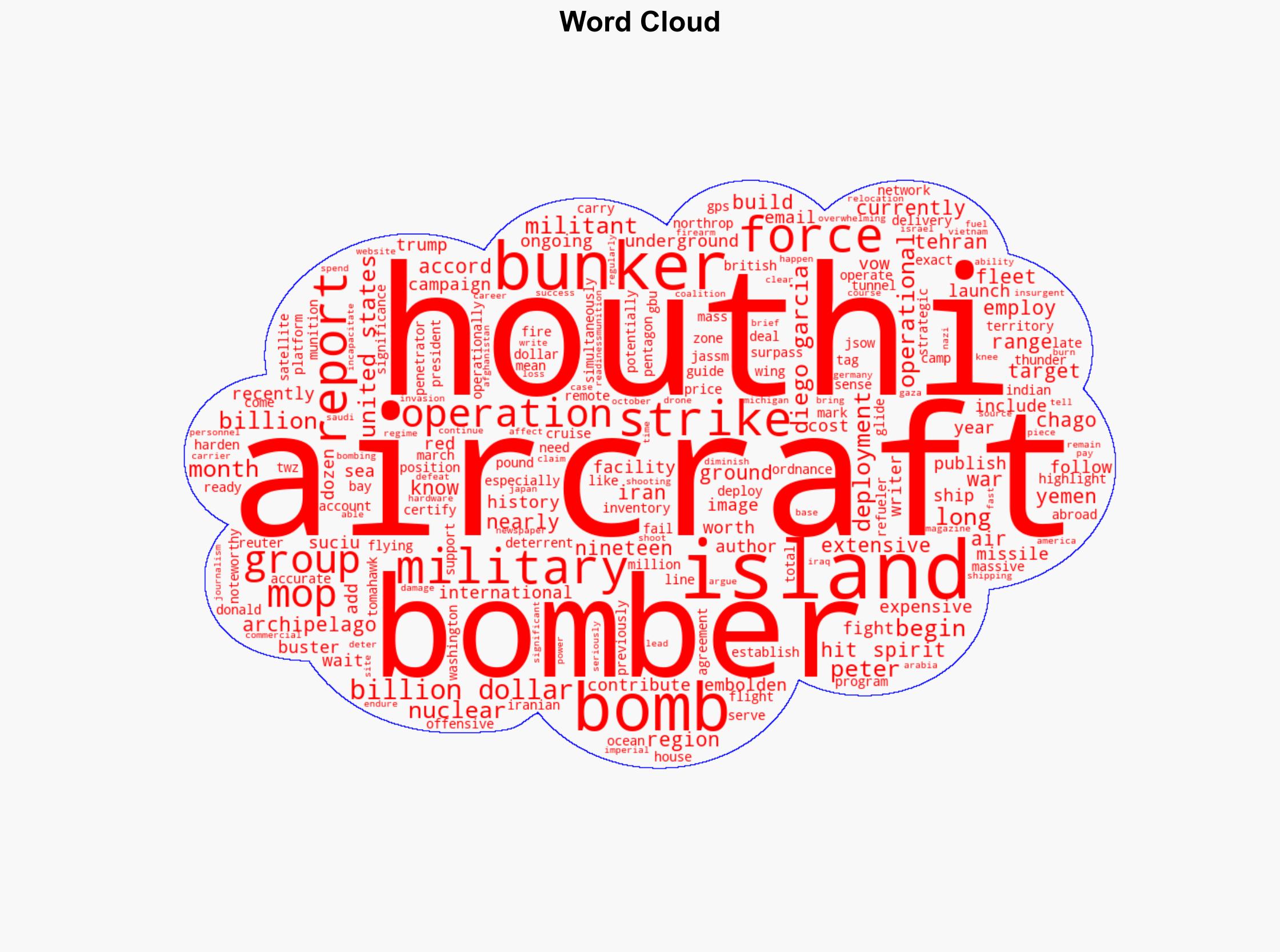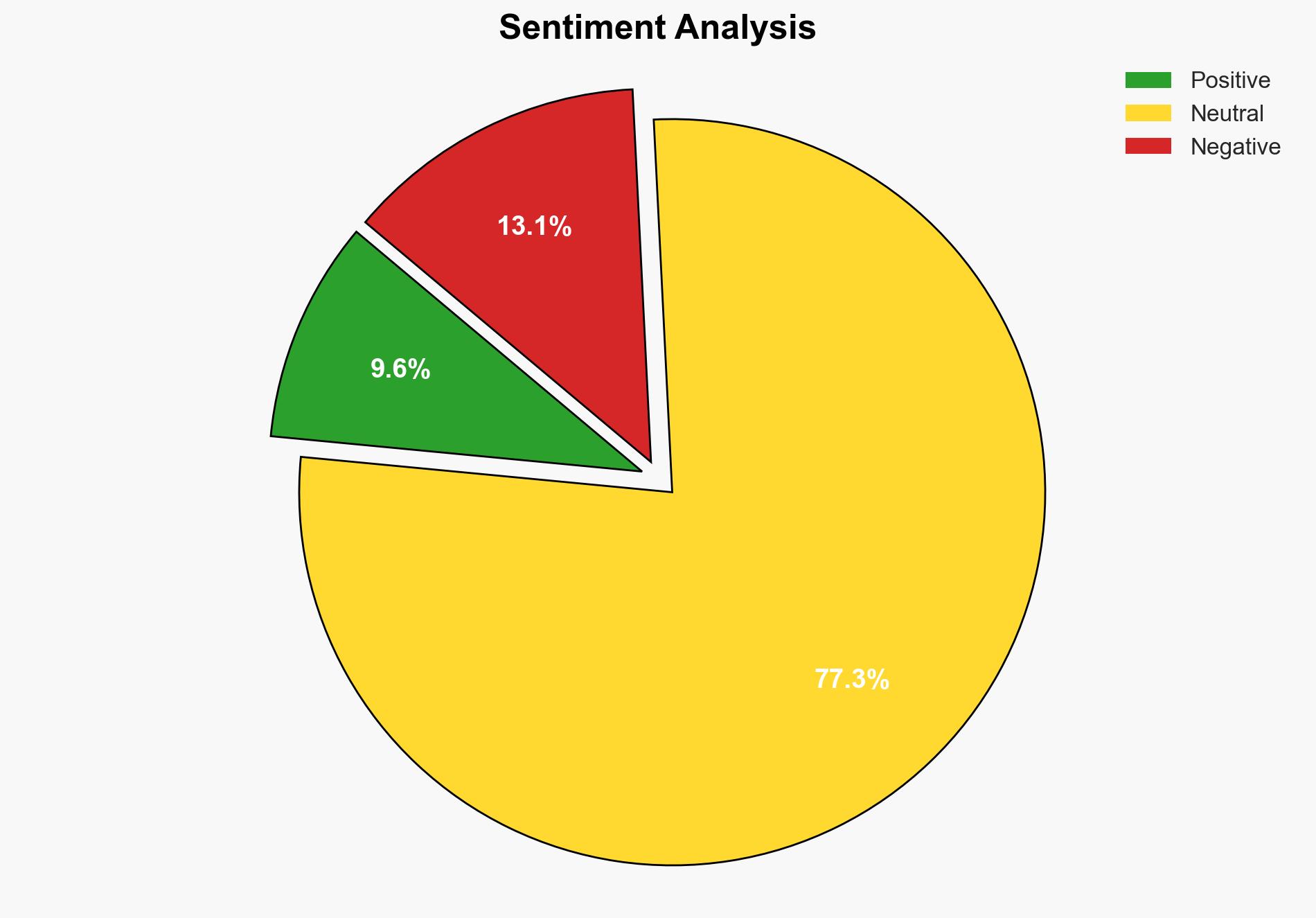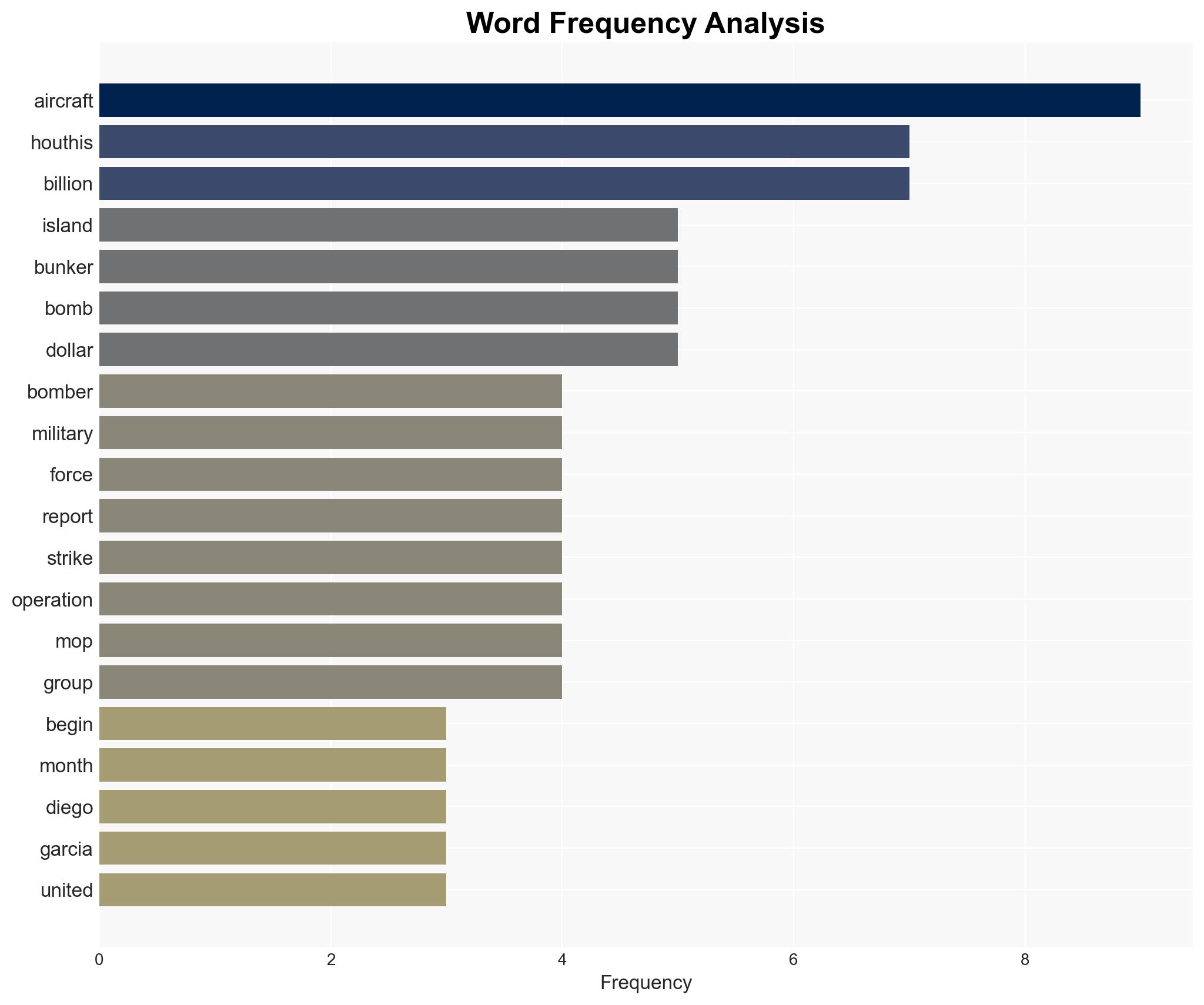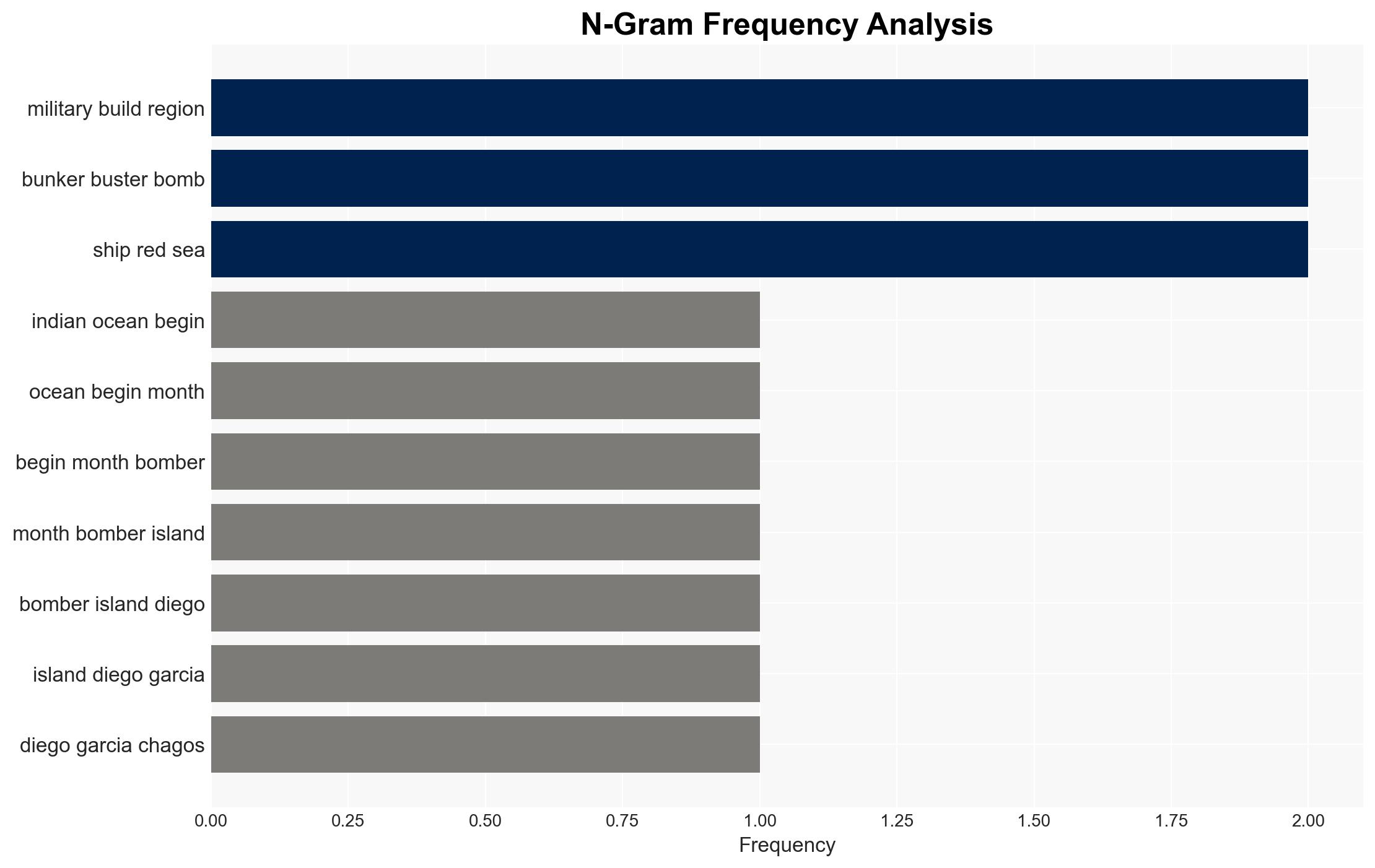The B-2s in the Indian Ocean Arent Just for Show – The National Interest
Published on: 2025-04-08
Intelligence Report: The B-2s in the Indian Ocean Aren’t Just for Show – The National Interest
1. BLUF (Bottom Line Up Front)
The deployment of B-2 bombers to Diego Garcia in the Indian Ocean signifies a strategic military posture by the United States, aimed at deterring potential threats from Iran and supporting operations against Houthi militants in Yemen. This move highlights the U.S. commitment to maintaining regional stability and showcases its capability to project power globally. The presence of these bombers, capable of carrying advanced ordnance, underscores the seriousness of the U.S. stance on regional security issues.
2. Detailed Analysis
The following structured analytic techniques have been applied for this analysis:
General Analysis
The deployment of the B-2 bombers to Diego Garcia is a calculated measure to enhance deterrence against Iran, particularly in light of recent tensions surrounding the Iranian nuclear program. The bombers’ capability to deliver the GBU-57A/B Massive Ordnance Penetrator (MOP) positions them as a critical asset in potential strikes against fortified underground facilities. The strategic location of Diego Garcia allows for rapid response to threats in the Middle East and supports ongoing operations against Houthi forces in Yemen. The deployment also serves as a demonstration of U.S. military readiness and technological superiority.
3. Implications and Strategic Risks
The presence of B-2 bombers in the Indian Ocean poses several strategic risks and implications:
- Increased tensions with Iran, potentially escalating into military conflict if diplomatic solutions are not pursued.
- Potential backlash from regional actors who may perceive the deployment as a threat to their sovereignty or stability.
- Economic implications due to the high operational costs associated with maintaining such a deployment, impacting U.S. defense budgets.
- Risk of miscalculation or accidental engagement with Iranian forces, leading to broader conflict.
4. Recommendations and Outlook
Recommendations:
- Enhance diplomatic efforts to address the Iranian nuclear issue, reducing the need for military escalation.
- Strengthen intelligence-sharing with regional allies to improve situational awareness and coordination.
- Invest in cost-effective technologies and strategies to maintain deterrence without excessive financial burden.
Outlook:
Best-case scenario: Diplomatic negotiations lead to a de-escalation of tensions with Iran, reducing the need for military interventions.
Worst-case scenario: Military conflict erupts between the U.S. and Iran, destabilizing the region and impacting global economic interests.
Most likely outcome: Continued military presence serves as a deterrent, with periodic diplomatic engagements to manage tensions.
5. Key Individuals and Entities
The report mentions significant individuals and organizations involved in the strategic deployment and regional operations, such as Donald Trump and Peter Suciu. These individuals are noted for their influence and contributions to the current geopolitical landscape.




